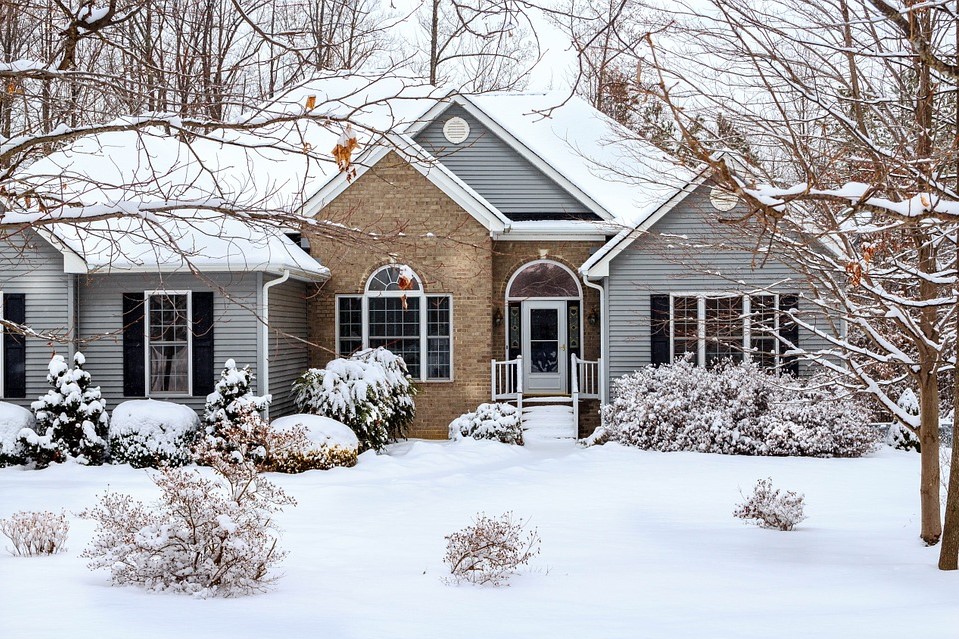
Years of exposure to varying weather conditions can cause the color of your vinyl siding to fade. If your home’s siding is no longer the vibrant hue it was when you installed it, you may need to replace it (if it’s still in good overall condition). The best part is, you don’t need any special tools or skills to revitalize your siding. Read on to learn how to paint vinyl siding.
How to paint vinyl siding
If you’re going to paint your vinyl siding, you’ll need to gather your tools first. This is what you’ll need:
- Paint with acrylic and urethane resins
- Primer (optional)
- Hose
- Store-bought or homemade cleaning solution
- Bucket
- Soft-bristled brush, cloth, sponge, or power washer
- Plastic sheets
- Painter’s tape
- Ladder
- Mask
- Paint roller
- Paintbrush
Do the prep work to paint your vinyl siding
Check the warranty. If your vinyl siding is still under warranty, check with the manufacturer before you paint it so you don’t void the warranty. You may have to adhere to specific instructions and restrictions.
Use the right paint. You can’t just use any paint for vinyl siding. For starters, you need to choose paint that’s intended for outdoor use. Vinyl siding expands and contracts as the temperature changes, so you need paint with acrylic and urethane resins that can accommodate those changes.
Stick with the same color or go lighter. You can stick with your siding’s current color or select a different shade. If you decide to go with a different color, pick one that’s lighter than the color you have now. Different types of vinyl siding are designed to absorb different amounts of heat. If you paint your siding with a color that’s darker than its original shade, that can cause the siding to absorb more heat than it can handle, which can make it warp or buckle. If you repaint your vinyl siding with a dramatically different color, you may run into problems with color banding. When repainted vinyl siding expands and contracts, stripes of its original color are sometimes visible near the seams.
Figure out if you need primer. You may need to use a primer if the vinyl siding is severely faded, porous, or pitted. If you aren’t sure if you should use a primer or not, check the instructions on the paint cans or just apply primer to be on the safe side.
Give the siding a thorough cleaning before you begin painting
Take the time to scrub your vinyl siding and get rid of any dirt, dust, mold, mildew, and other debris. Don’t cut corners here. If you paint the siding without thoroughly cleaning it first, you’ll be disappointed with the results. Your house may even look worse after a new paint job than it did before.
- Start by spraying the siding with a hose to remove any loose dirt and debris. You can use a store-bought cleaner that’s designed for vinyl siding, or you can create your own cleaning solution by combining 1/3 cup powdered laundry detergent, 2/3 cup powdered household cleaner, 1 quart of laundry bleach, and 1 gallon of water. Cover any plants near the house so you don’t get harmful chemicals on them.
- Clean the surface of the siding with a cloth, sponge, soft-bristled brush, or power washer. Before you use a power washer, check the siding manufacturer’s instructions so you don’t inadvertently cause damage or get water underneath the siding.
- Work in sections and rinse each area before you move on to the next. Once you’ve cleaned all the siding, give it another rinse. Make sure it’s completely dry before you start painting.
Paint on a day with the right weather conditions
It’s critical to check the weather forecast before you paint your siding. Choose an overcast day with mild temperatures and low relative humidity. If you paint your vinyl siding on a day that’s hot, sunny, or windy, the paint may not properly adhere to the surface. You might not notice a problem right away, but you may find that the paint cracks and flakes as time goes by.
Prime and paint the vinyl siding
Gather everything you’ll need before you get to work. That will include paint, possibly primer, a roller or paint sprayer, brushes, and a ladder. Use sheets of plastic or painter’s tape to avoid getting paint where you don’t want it, such as on window frames.
- Wear old clothes and a mask. If you’ll need to climb a ladder, have someone hold it for you.
- If you decide to use primer, apply that before the paint. You will be able to quickly paint most of the surface using a roller or a sprayer. For tight areas that you might miss, use a brush.
- Apply the paint in thin, even coats. After you paint the first coat, make sure it’s at least mostly dry before you move on to the second. Allow the second coat to dry completely, then see how the house looks. In most cases, two coats are enough, but you may need a third.
Vinyl siding is popular because it’s durable, easy to care for, and able to stand up to a wide range of weather conditions, but nothing is completely resistant to the effects of Mother Nature. If your vinyl siding has faded, a simple DIY painting project may be all it takes to make it look brand new.





